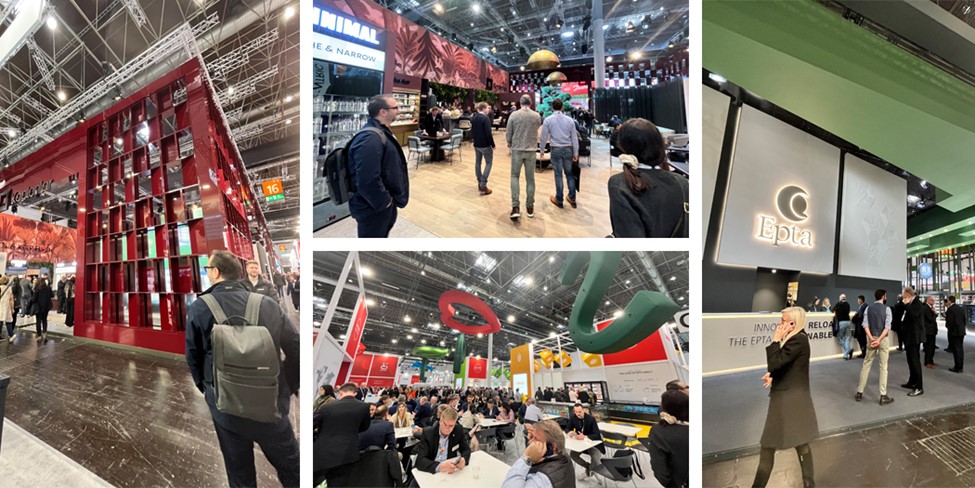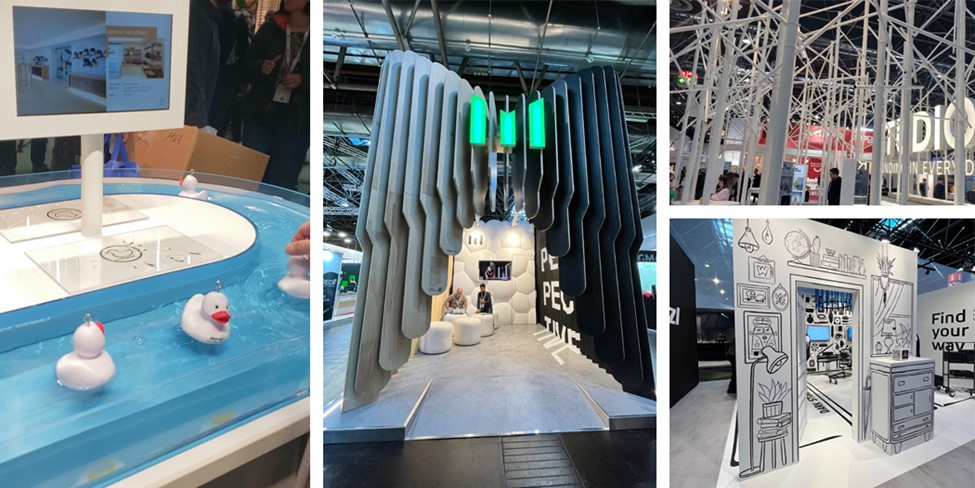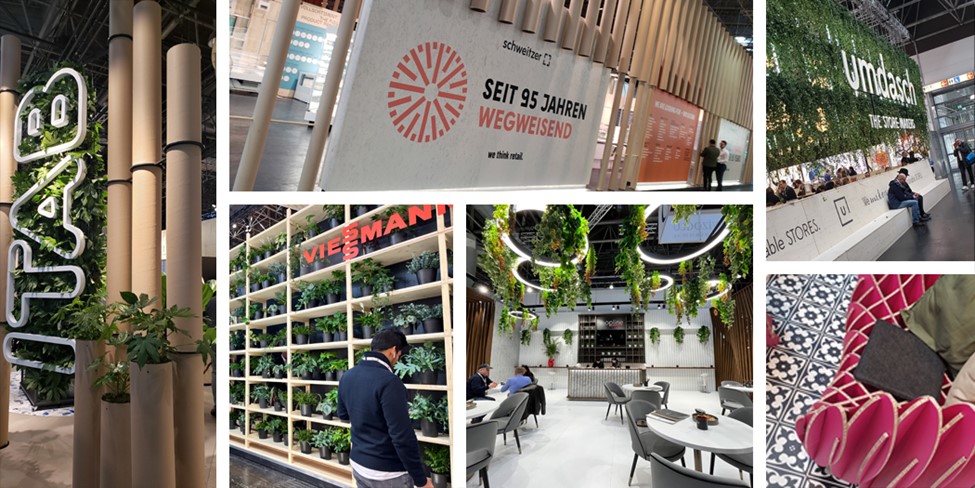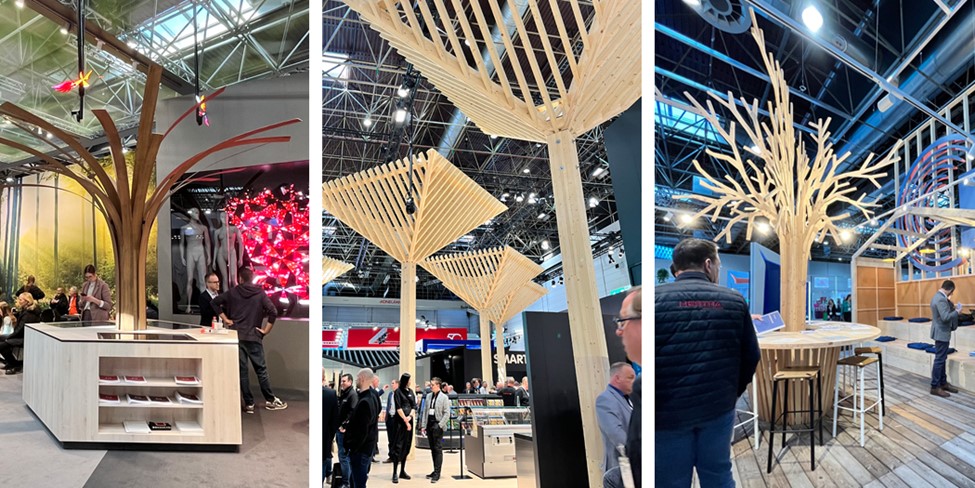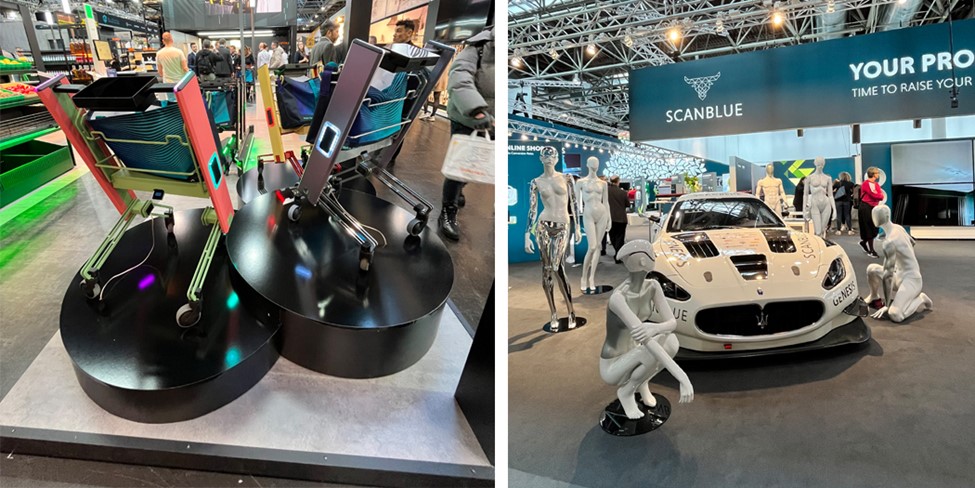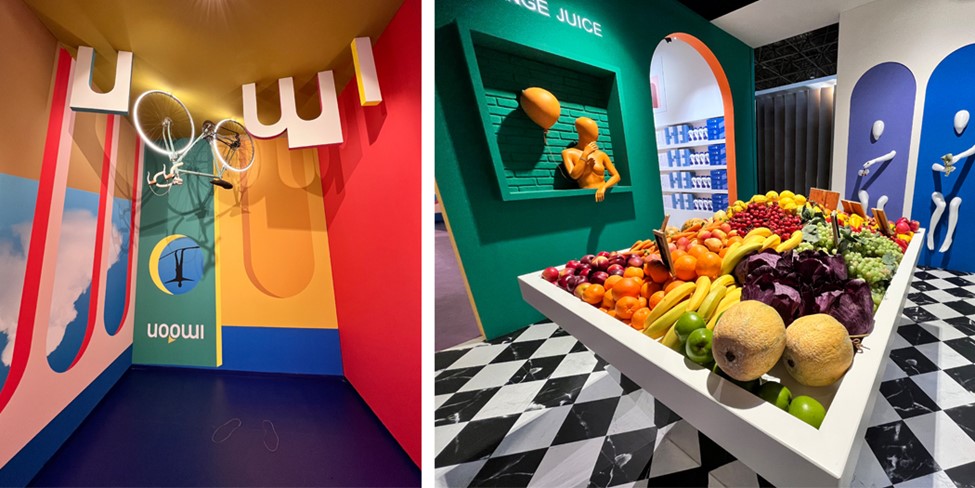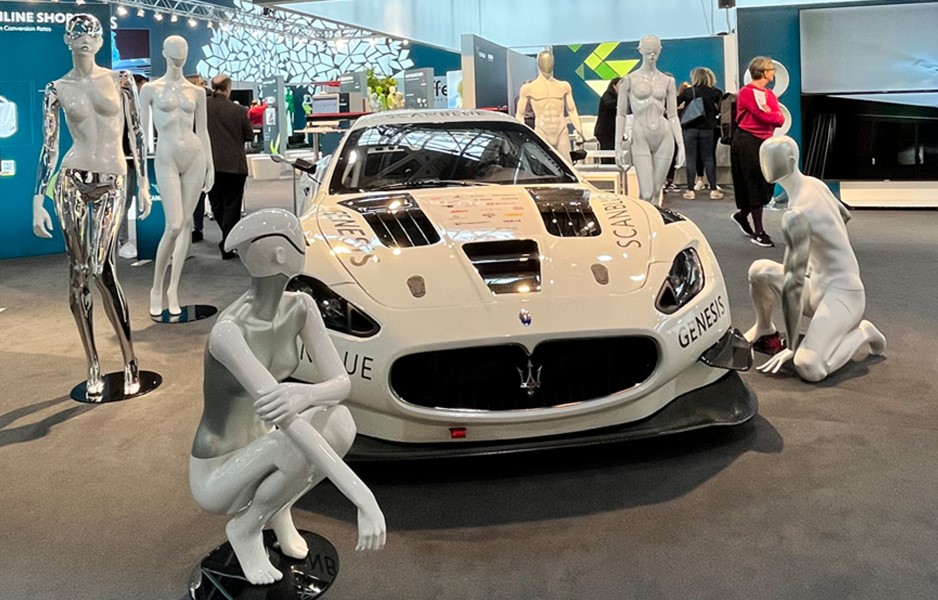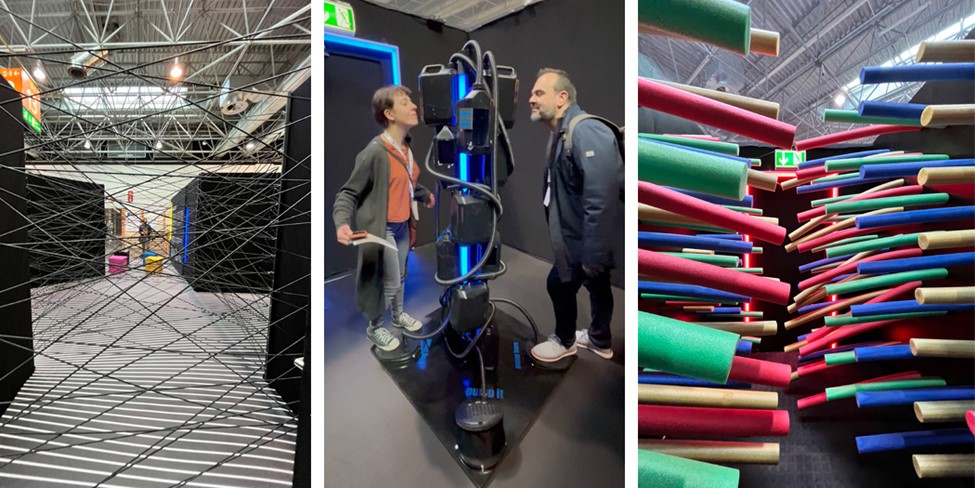Arriving in Düsseldorf always gives me a great feeling, usually because it means I’m back at EUROSHOP! The event is billed as ‘The No.1 Retail Trade Fair in the World’ and only occurs every three years. I have many reasons to love this show. I get to see some of the most creative products, materials, and exhibit designs anywhere in the world; I can track major trends in the events industry; and it also gives me an opportunity to reconnect with our European kubik team members while also indulging at the local Brauhäuser!
However, this year there was one more reason the show felt special. The previous edition of EUROSHOP in 2020 was the very last show that I was able to attend before the global pandemic slammed the door on the live events industry. I still recall attending with two of my creative directors and imagining that this new virus from halfway around the world would likely fizzle out soon. By the end of our stay, German cases were already on the rise, and more serious containment measures were being rolled out around the globe. The two ensuing years that followed seem like a bad dream now. I know that live events have been returning for more than a year, but attending EUROSHOP last week somehow felt like I was able to finally turn the page on this horrible chapter.
The auspicious timing of the last fair and the three-year cycle meant that this was at least one event that managed to dodge most of the misfortune that crippled so many others. There were still a few subtle signs that the great retail fair was diminished. A few halls had trimmed off floor space with drapes, but almost every building from Halls 1 to 17 were in use, and there were some BIG activations on the show floor!
Keeping Your Cool
It might surprise some people to know that the largest and most opulent displays at Euroshop tend to be in Halls 14-17, which usually house brands in the commercial refrigeration and energy management segment. This has been true for every Euroshop I’ve attended, but the difference in scale, execution, and likely in spending was more pronounced this year. With supermarkets and other retailers of essential food products being relatively pandemic proof, it stands to reason that companies supplying industrial refrigeration units to this industry might have also been spared the worst of the recent economic slowdown. Some of the most impressive exhibits in this category included Epta in Hall 15 and Kaplanlar, Veissmann, and Arneg World in Hall 16.
Small Packages
While there were some very large and impressive displays this year, not everything was so grand. The last few editions of Euroshop featured many impressive and immersive experiences from various agencies and creative studios that serve this industry. This year, those experiences seemed to be on the decline, and there appeared to be a lower number of creative agencies and fabricators on the show floor in general. This apparent contraction (mostly in halls 10-12, and even in hall 1) provided a strong juxtaposition to the exhibitors I mentioned earlier. It’s no surprise that a show this large and diverse would provide a reflection of the outside world. The last few years were particularly hard on smaller design firms, exhibit houses, and experiential agencies, but it wasn’t all negative. We still saw impressive and forward-thinking experiences from brands like Wanzl and Schweitzer. Perennial favorites, Umdasch, were able to feature a series of topics through highly engaging mini displays within their space. One memorable station featured RFID rubber ducks that could be pulled from a river to reveal various case studies.
The Sustainability Trap
I’ve talked about some of the individual exhibitors, but there were also some themes that were evident throughout the show. The largest of these was ‘sustainability’. In truth, this has become somewhat prevalent at most events that I’ve attended in the last year. Frankly, I’m concerned that sustainability has begun to devolve from a serious socio-economic concern into a trendy business buzzword. As if to punctuate this feeling of “show and tell” communication, almost every brand that had a sustainability story to tell was defaulting to using an inordinate number of live plants and various paperboard panels for their exhibit construction. With a majority of exhibition displays in EMEA adopting the wasteful build-and-burn approach, I question how much of these materials truly ended up being carefully taken down and recycled or otherwise repurposed. The ITAB space was largely made from paper tubes, while Umdasch and others created walls of potted plants for their perimeter and branding. I have to think that, if some of the companies truly wanted to show off their sustainable practices, they might have chosen to go with slightly smaller footprints or to demonstrate to guests what they are doing in their everyday manufacturing practices to be sustainable. Instead, I saw mostly the same traditional products and displays, just wrapped in cardboard instead of shiny laminated panels.
As a side note… a recent client who is in the print industry wanted to really tell their sustainability message at an upcoming show. They had a variety of proof-points that we were looking at turning into fun and educational activations. One of these involved their commitment to providing cleaner air for print industry workers through their water-based products. They had this great idea to create a ‘clean air booth’ full of printed materials. Guests would walk into the booth and simply breathe in to test the difference. It wasn’t just a product story; it was a sustainability story. That’s what I call walking the walk!
Back at Euroshop, we almost found it comical how many different iterations of trees we saw throughout the event.
The Tech
Aside from the popularity of natural and unfinished materials throughout the show, we also noticed a few other trends. The spinning holograms that were first made popular by HYPERVSN seemed to be everywhere! We noted several fun applications of this tool, including several large-scale demos.
Another trend that should come as no surprise was the rise of AI. We saw products that would help with automated checkout, stock/inventory management, loss prevention, and even shopper behavior tracking in real time. Notable exhibitors that led the charge in this area included SCANBLUE and MAGO.
That wraps up the majority of observations from this year’s Euroshop, but I would be remiss if I didn’t at least mention some of the more creative displays in the unique lighting and mannequin segments… not to mention some of the more esoteric student-driven experiences in Hall 13.
Milano based IMOON executed a beautiful experience in Hall 9 that featured artistic vignettes and various photo opportunities that revolved around their lighting products.
German-based GENESIS DISPLAY had an engaging mannequin and digital twin display that they were sharing with co-exhibitor, SCANBLUE. The space featured regular live demonstrations and super futuristic models.
Finally, in Hall 13, we had the Designer’s Village, a Retail Ball Game and (our favorite) the ROOM4SENSES display. This purely experiential journey was created by four students from the Stuttgart School of Advertising Design (Fachschule für Werbegestaltung Stuttgart). The space featured a series of very stark black rooms that had a single entrance and exit, and each was connected via a tunnel of black bungee cords. The maze-like experience was a bit disorienting at times, and maybe even a little claustrophobic, but it achieved its goal. The creators wanted guests to really focus on one specific sense at a time in each of the 4 rooms. We ran a ‘touch’ gauntlet filled with pool noodles, got turned around in a strobe light room, and then stomped on various foot-pumps to release specific scents into the air. It was a fun distraction from the rest of the show and a simple reminder of how creative merchandising can use each of our senses to engage with customers.
If there was one thing that I took away from this event, above all others, it was the clear shift away from gleaming, highly polished displays. I may not have always agreed with how they tried to demonstrate their idea of “green”, but it was clear that many brands seemed very comfortable moving towards more modest environments and fabrication methods in favor of being more efficient and, (yes), more sustainable!
With our team on the brink of collapse and our step counters steaming, we gladly boarded our transport to Amsterdam to regroup with our European team members. And so, we bid auf wiedersehen to Düsseldorf and another excellent edition of Euroshop!
About the Author:
Adriano is a 25-year veteran of the events and experiential marketing industry and has helped create brand activations across the globe. His work is focused on sparking human engagement across a variety of mediums, from exhibits and live events to retail solutions, corporate environments, galleries, and interactive experiences.

